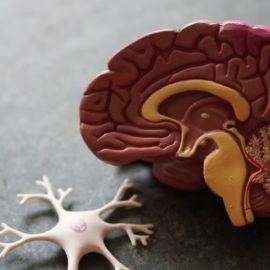

This article is an excerpt from the Shortform book guide to "The Sports Gene" by David Epstein. Shortform has the world's best summaries and analyses of books you should be reading.
Like this article? Sign up for a free trial here .
Why are sports divided by gender? How is sex defined in sports?
Sports divide men’s and women’s events into two distinct categories for good reason, yet on the level of the individual athlete, the distinction between the sexes is not so easy to define. In sports, the biological distinction between male and female is not black and white.
Let’s explore the issue of gender in sports to help shed light on the matter.
Testosterone and Gender
In sports, gender is not so easy to define in a biological sense. For example, there are some women who have an X and a Y chromosome, testes, and male levels of testosterone. Some of these women have androgen insensitivity. This means that, while they have male levels of testosterone in their bodies, they are not able to use it. In the general population, this happens in one out of 20,000 to 64,000 women. However, it is much more common in sports. From data taken over five Olympic games (the last time this data was collected was in 1996), one in 421 women had XY chromosomes and androgen insensitivity.
Epstein explains that “XY androgen insensitive” women are overrepresented in sports due to their body type rather than testosterone. Even though these women are unable to utilize the testosterone their bodies produce, their build is more “masculine” than that of other athletes. They are generally taller than most women, with longer arms and legs. For this same reason, it is likely that this genotype is also overrepresented in the modeling industry.
While women with XY chromosomes and androgen insensitivity cannot use any of the testosterone their bodies produce, another condition called partial 21-hydroxylase deficiency causes women to produce extra testosterone. This likely gives these women a significant advantage in sports. One study found that elite female athletes across several sports had twice as much testosterone as non-elite female athletes.
In yet another condition called De La Chapelle syndrome, people who have two X chromosomes (characteristic of women) develop as if they had an X and a Y chromosome (characteristic of men). This is because during recombination (the process in which chromosomes from our mothers and fathers “mix” their information), some of the genes from the father’s Y chromosome end up on an X chromosome.
Testosterone as a Basis for Discrimination
An article questioning the efficacy and ethics of testing for hyperandrogenism (high levels of testosterone) in female athletes asserts that there is no evidence of high testosterone levels boosting female athletes’ performance. The authors go so far as to state that, in women, naturally occurring testosterone levels are “not related” to sports performance. Therefore, the authors assert, tests conducted at elite sporting events looking for “intersex” women can only serve to damage the lives and careers of these athletes.
The article notes that the main impetus for conducting “verification” tests is to ensure that men do not masquerade as women during competition. However, the authors note that since testing began in 1966, this situation has never been documented (with a notable exception of an unproven incident in women’s volleyball in 1972).
Like The Sports Gene, the article’s authors suggest that it is the increased height of “XY” women that gives them an advantage. They argue that to test for intersex conditions in sports is discriminatory, as it falls into a large category of naturally occurring, genetically based differences between athletes. If athletes are not being screened out for other advantageous traits, they argue, neither should XY women or other athletes who would be considered “intersex.”
| Women and Men Are Both Fierce Competitors In discussing gender in sports, Epstein makes a reasonable, evidence-based argument for why women will never catch up to men in terms of sports performance, with the implication being that men are better at sports than women. It may be true that women will never, on average, jump farther, lift heavier, or run faster than men. But the book is not titled The Power Gene or The Speed Gene, the book is titled The Sports Gene. And just because men may be able to outperform women in measures of speed and strength does not mean they are inherently better at sports. The main feature of sports is the competition. This is what viewers tune in for. We love to watch athletes at the top of their form test their limits against other athletes. In this respect, men hold no advantage over women. Female athletes are fierce competitors in their own right, who test their athleticism against other female competitors in the same way that men do. An article in the Columbia Journalism Review notes that for fans, there is a connection between self-esteem and the success of their favorite sports teams. This is because when we feel connected to something, our brain adopts some of that person or team’s success as our own. This can happen while watching women represent their country at the Olympics or World Cup just as much as it can while watching men. An article from Grantland discusses research on mirror neurons. The research shows that when we watch someone perform an action, approximately one-fifth of our own neurons for the same action fire. (If we watch someone do something strenuous, our own respiration and heart rate increase!) The more experience we have in a sport, the more our brains can “fire along with it” while we watch. The article cites an interview with one of the researchers who says that, while it is “very hard to prove,” watching sports makes us feel good in part because our mirror neurons are playing along with the players on the field. This happens whether the players are men or women. If sports simply boiled down to statistics measured in meters jumped, seconds run, or points scored, there would be no need to tune in to watch the events. We don’t love sports for the final numbers, we love sports for the competition, the heart, and the story. These qualities are just as present in women’s sports as they are in men’s. |

———End of Preview———
Like what you just read? Read the rest of the world's best book summary and analysis of David Epstein's "The Sports Gene" at Shortform .
Here's what you'll find in our full The Sports Gene summary :
- A look at how our genes play a determining role in our success in sports
- Why practice doesn't always guarantee success
- The fortuitous gene pairings that can lead to elite athleticism






